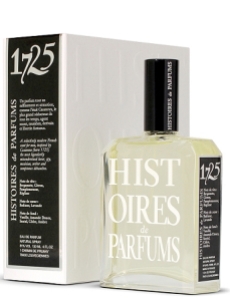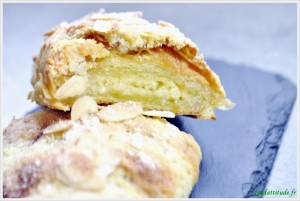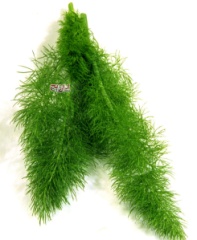Hail Caesar! Hail the conquest of lands by earth, wind and fire. Hail the discovery of new lands, the steely determination to conquer the challenges which lie between us and our destiny, and the power of the human spirit to defeat adversity.

Henri-Paul Motte, “Vercingétorix devant César” or “Vercingetorix surrendering to Caesar.” 1886.
Those words are the specific inspiration for Veni, Vidi, Vici, a trilogy of perfumes in the Edition Rare Collection from Histoires de Parfums. It is a French, niche perfume house which pays tribute to famous characters and mythical years, capturing a lyrical, olfactory tribute to history in a bottle. Histoires de Parfums was founded in 2000 by Gérald Ghislain, its nose and the creator of its perfumes, and in early 2013, he released Veni, Vidi, Vici. As their name gives away, they are a tribute to Caesar’s famous phrase (“I came, I saw, I conquered“) with each eau de parfum representing a different natural element in that process: Veni focuses on the Earth; Vidi on the Wind; and Vici on the Fire element. Yet, they are all linked by one common olfactory thread: they all have cardamom.
 I’d heard a lot about the collection at the start of the year, and I continuously pondered getting samples, but something put me off. Frankly, the notes alarmed me; they seemed odd, discordant, and a very peculiar mix. For reasons that I couldn’t explain, the collection and its press release stories just seemed too much for me to wrap my head around. And this from someone who adores history, focused a lot on Caesar at one point, and even has a lingering bias against Cicero because of him! But Veni, Vidi, Vici in perfume form just put me off for some inexplicable reason. Then, Lucas of Chemist in the Bottle sweetly sent me samples of all three as part of a generous thoughtful gift all the way from Poland. He was convinced at least one of the perfumes with their spicy nature and their oriental, woody nuances would be bound to appeal to my tastes. He clearly knows me better than I know myself because I’m quite impressed with Veni, my first exposure to the collection. So, I’ll be reviewing each one, though not all in the same post. (I’m simply too verbose to manage such a feat in any way that isn’t encyclopedic and painful to read!) I’ll start with Veni, and then later amend this post to include links to the other 2 reviews when they are done.
I’d heard a lot about the collection at the start of the year, and I continuously pondered getting samples, but something put me off. Frankly, the notes alarmed me; they seemed odd, discordant, and a very peculiar mix. For reasons that I couldn’t explain, the collection and its press release stories just seemed too much for me to wrap my head around. And this from someone who adores history, focused a lot on Caesar at one point, and even has a lingering bias against Cicero because of him! But Veni, Vidi, Vici in perfume form just put me off for some inexplicable reason. Then, Lucas of Chemist in the Bottle sweetly sent me samples of all three as part of a generous thoughtful gift all the way from Poland. He was convinced at least one of the perfumes with their spicy nature and their oriental, woody nuances would be bound to appeal to my tastes. He clearly knows me better than I know myself because I’m quite impressed with Veni, my first exposure to the collection. So, I’ll be reviewing each one, though not all in the same post. (I’m simply too verbose to manage such a feat in any way that isn’t encyclopedic and painful to read!) I’ll start with Veni, and then later amend this post to include links to the other 2 reviews when they are done.
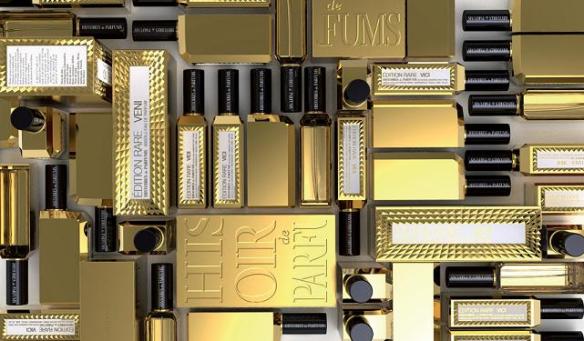
Veni‘s split description on the Histoires de Parfum website is as follows:
Veni represents the earth, which in many ways still remains a mystery to us. It is nurturing as much as it is wild, forcing us to keep our senses sharp, all the while pushing our limits.
Like the early explorers who ventured beyond the borders of the known world, VENI offers an olfactory adventure worthy of the Odyssey. Journeying from a familiar bow of Lavender, the Cardamom must contend with a groundswell of Ambergris and strong gusts of Galbanum before landing on a pristine beach of Cinnamon. It then enters a dense forest of Guaiacwood, only to discover a bed of Carnations that hold subtle scents of Saffron, Vanilla and Patchouli. A journey worthy of the ancient epic heroes….

Veni Eau de Parfum.
The full notes are:
Top Note: absolu cardamom, cinnamon, galbanum, lavander
Heart Note: carnation, saffron, guaiac wood
Base Note: vanilla, toffee, patchouli oil, musk, ambergris, oakmoss
Veni‘s notes, here and on the Fragrantica website (which mentions caramel and tagette), are part of what put me off the whole line. I simply couldn’t fathom the combinations. Galbanum is not one of my favorite notes and it is often such a sharp, pungent green that it borders on black. I’m not a fan of lavender, either, and to mix it with toffee or caramel with carnation? It was too much for my tiny, little mind.
Well, consider me chastised and very apologetic. Veni is a beautiful perfume that really requires ignoring what the notes sound like. To me, and on my skin, it was more like a gloriously spicy oriental with rich, meaty, beefy, jammy floral notes and velvety, peppered woods, atop a sweet, vanillic, nutty, mossy patchouli base. It was the sort of spicy oriental that reminded me a lot of Neela Vermeire‘s beautiful creations. And I liked it a lot — despite the fact that it has ISO E Super in it. (Honestly, that should tell you everything, given how I think that synthetic is the devil’s creation!)
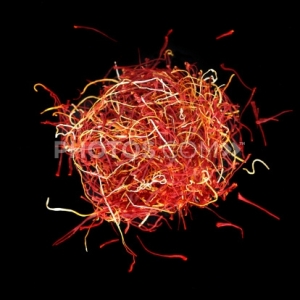
Source: Photos.com
Veni opens on my skin with the most beautiful lavender note. It’s simultaneously sweet from the vanilla, and spicy from the cinnamon, cardamom and saffron. Hints of supple, smooth, golden-red leather lurk discreetly underneath. Soon, almost within seconds, the lavender recedes to the background and the spices take over. They create an explosion of earth-toned colours: red, gold, brown, copper — all infused with a very floral note that feels like saffron-rose backed by patchouli. There is no rose in Veni but the carnation note feels nothing like the dry, desiccated, pungent, almost mealy aroma that you find in florist flowers. This is a carnation that is so red and jammy, so rich and beefy, so profoundly deep in body that it really almost seems more like a crimson rose. It’s definitely the result of the saffron — fiery red instead of dessert-like yellow — and the patchouli. The latter is also interesting because it’s never purple or dirty black like some 1970s patchouli but more of a mossy-green, infused by chypre like richness from the oakmoss. The elements work to transform the carnation into a true beauty, dripping richness and depth, with spicy nuances and a plush, velvety base.

Source: backgrounddesign.net
Other notes soon rise to the surface, creating a beautiful, balanced, floral spice bomb. There are woody notes which are, at first, they are lightly peppered and delicately smoked. They compete against the fiery, rich saffron and other spices, as well as the vanilla-caramel flickers of at the perfume’s base, helping to cut through the sweetness and provide a dry counterpart. Veni is a beautifully balanced perfume with no one element overpowering the other. It’s also well-blended — so much so that the perfume throws off notes like coloured lights from a crystal chandelier hit by the light. Sometimes, the lavender seems more pronounced, sometimes the beefy carnation. Sometimes, the base seems more noticeable: the dry vanilla; the lightly musked ambergris; the mossy, sweet patchouli tinged with bright green; and the subtle dose of nutty amber. (For all the potential clash of “toffee” or “caramel,” the note merely imparts a nutty, resinous element to the sweet, vanillic, amber base.) At other times, you can detect minute, subtle flickers of galbanum, though it rarely is sharp, pungent, arid or acrid. In fact, out of two tests, I only detected the galbanum the second time around and only in the opening fifteen minutes. Veni is so well-blended, I suspect that different notes will manifest themselves upon separate occasions.
Even the ISO E Super works here — shocking as that may be for me (of all people) to say. The first time I tested Veni, the peppered notes were handled with an incredibly light, subtle touch, never feeling like antiseptic rubbing alcohol but truly more like peppered, velvety woods. I was a little less enthused the second time around when the synthetic went back to being its usual self on my skin, manifesting that unpleasant character that I despise so much and being much more powerful, dominant and intrusive. But, despite that, I actually could put up with it. I’m not quite sure I understand it and can only chalk it up to the beauty of the rest of the notes. (Frankly, I’m a little stunned.) That said, one Fragrantica commentator expressly noted the ISO E Super note and found it to be too, too much:
Veni, like its sisters Vici and Vidi, has way too much ambroxan and/or Iso-E-Super for me to be able to like it. That ethereal synthetic note is so intense that it simply clobbers what could have been a gorgeous spicy perfume.
Though I’m overjoyed at finally finding a soul-mate who detects and hates ISO E Super as much as I do, I have to repeat what I always say about the blasted note: not everyone can even detect it, and a few actually adore it. Unfortunately, what is “nothingness” to some, and a pheromone to a few, can be either revolting or a massive trigger of migraines in others. (You can read more about perfumers’ favorite, hidden, unlisted, synthetic ingredient in my article on ISO E Super here.) Judging by my two tests, I think the strength of the note will depend largely on how much perfume you apply; I applied significantly more Veni in my second test to assess its longevity, so the ISO E Super was much more dominant.

Source: WorkofBeauty.blogspot.com
Veni’s drydown begins just short of 3 hours into the perfume’s development. The carnation — which had become quite pronounced around the 90 minute mark — remains at the forefront of the perfume, touched by spices, patchouli and soft woods. As always, the lavender note is subtle, flittering around the edges like Caspar the jolly ghost. The same thing applies to the quietly smoked note from the guaiac wood. The true emerging star, however, is the vanilla which starts to become much more pronounced. It’s flecked by caramel, and lightly dusted by cinnamon. As time passes, Veni softens even more to become, primarily, a creamy vanilla-caramel fragrance, subtly infused with spices and floral notes. In its final moments, it’s an abstract, amorphous blur of musky, woody, sweet notes. All in all, Veni lasted just a hair above 5 hours on my perfume-consuming skin with a small dose and 6.5 hours with a larger one. The sillage was strong only in its opening minutes, before becoming moderate-to-soft for most of the perfume’s development. It became fully close to the skin just over two hours in and, by the fourth hour, you had to really sniff at your arm to detect it.
There aren’t a ton of detailed reviews for the Veni, Vidi, Vici collection out there. Judging by Fragrantica and some blogs, Veni seems to be the general favorite out of the trio. It certainly was for Lucas at Chemist in a Bottle whose lovely review of the fragrance reads, in part:
Right from the start it effuses a luscious warm and spicy note of ambergris which is then followed by aromatic blend of lavender and coriander. It smells kid of fluffy, like a big and warm woolen jumper. Now it is time for the gourmand vibe to appear. Slowly lavender gets caramelized, sweet caramel engulfs its all tiny flowers leaving you with a rich and sticky smell. It is absolutely pleasant!
On this caramel bed lays a sophisticated vanilla which makes for a praline-like smelling thing. It’s playful and so delicious one would want some sweets after wearing it. Guaiac wood (which I would rather say smells like mahogany) brings some balmy quality to the scent. Later on galbanum appears raising the balmy feeling to the higher levels. Cinnamon is a quiet star of Histoires de Parfums Veni. It’s spicy character has been tempered here to blend it so well with benzoin and amber to create an amazing effect.
This amber is very sensual, like a velvet scarf infused with the most precious essences of orient. There’s something very sexual and inviting in it, something that provokes the senses. In its far drydown Veni smells of very light musks and saffron which also happens to be quite erotic. Patchouli gives the last, finat touch to the composition closing the entire bouquet of this perfume.

Source: Flowerpics.net
As you can tell, I had a very different experience than my friend. On my skin, Veni was far from a caramel gourmand. It was fiery spice bouquet dominated by a beefy, jammy, heady, rich, floral note that dripped glorious drops of ruby-red saffron, dusty cardamom, and mossy patchouli like a bleeding rose in a thicket of velvety, peppered, smoking woods. If Veni had been a lavender caramel on my skin, there is no way I would have loved it so much. That said, my skin turned the final stage into something quite similar to Lucas’ experience with the sophisticated vanilla, amber and light musk, even if the notes were still lightly spiced and as sheer and translucent as gauze.
Another blogger had a totally different experience than both of us when it came to Veni. Ines of All I Am — A RedHead wrote in her review:
in my mind, Veni comes very close to the description [of the perfume representing the earth]. It is very reminiscent of dry, summer land and I can imagine an army crossing it during early summer while the smells of green hasn’t yet been burned out by the sun, accompanied by lavender and other herbs wafting on a warm, green breeze. And there must be an orchard nearby, as there is definitely a fruity, lightly citrusy tinge to it.
When I say herbal, it is to signify the spicy notes that work so well with the green notes in this perfume, I can smell the cardamom but the idea is what I described.
And even though I am the first one to forgo depicting a perfume as masculine or feminine, in today’s sense, there is a definite masculine tone to it. Which makes it perfect for me.
The warmth of the earth and the sweetness of the plants growing on it, making this smell lightly fougerish and then woody, I am definitely conquered by the approaching perfumed army.
I was conquered, too, even though I had a drastically different experience. To me, the combination of the rich, red, almost rose-like floral with the heady spices over a rich, vanillic, ambered base made the perfume feel like some sort of distant cousin to Neela Vermeire‘s gorgeously spiced Trayee more than anything gourmand, aromatic or fougèrish. Trayee is a fragrance I adore, so the comparison is high praise for Veni (especially in light of the loathed ISO E Super). For one reviewer on Fragrantica, “adrienn99,” Veni reminded her of a Montale perfume. Montale is a line which, frequently, has a very rich, jammy rose note imbued with oud and ISO E Super which probably explains her comment: “Although aoud is not listed there, somehow I got that Montale feeling, although this one is way softer and very feminine.”
Even though all three of us had very different experiences with Veni, the fact that we all really liked it should, hopefully, inspire you to hunt it down and give it a sniff for yourself. It’s such a well-blended perfume that it throws out prismatic reflections like rays of light, so perhaps all three experiences might pop up on your skin, depending on occasion. Personally, I hope you get to experience what I did — a rich floral-oriental, woody, spice mix that overcame even my fierce loathing of a certain note. Try Veni and you may be conquered, too.
DETAILS:
Cost, Availability, & Samples: Veni, Vidi, Vici are all Eau de Parfum concentration perfumes from the “Edition Rare” Collection. They come in just one size: 2.0 oz/60 ml for $175 or €125. The perfumes are available directly from Histoires de Parfums with free shipping for all orders anywhere in the world for purchases over $130. As part of the special “Edition Rare” series of perfumes, it doesn’t seem that samples are available or that the perfumes are part of the Histoires de Parfums’ fantastic sample program. (6 samples of your choice whose $20 price goes towards the purchase of a large 4 oz. bottle. Further details are available here as to how the sample process works for general reference.) In the U.S., Veni, Vidi, Vici are available from Luckyscent or MinNY along with samples. I can’t find this collection listed on either Aedes, BeautyHabit or the Perfume Shoppe. Outside the U.S.: I couldn’t find the Editions Rare collection or Veni, Vidi, Vici at either Roullier White in the UK or Jovoy Paris which normally carries Histoires de Parfums, so I’d check in-store. Furthermore, only Vici is available at First in Fragrance which sells it for €125 the 2 oz/60 ml bottle, not the other two. However, Histoires de Parfums vast Store Locator that lists retailers from South Africa to Turkey, the Netherlands, Sweden and Kuwait. I’d check there for a store near you and hope that they carry the Editions Rare Collection. Samples: You can find samples at the retailers linked to above. Surrender to Chance has samples of each of the 3 fragrances starting at $7.99 for a 1 ml vial, or the full set of 3 fragrances for $21.99.
 As I explained yesterday, when I first saw the notes for the collection, I didn’t find them very appealing. They seemed odd, discordant, and a very peculiar mix, but Veni was so lovely, it told me that I shouldn’t pre-judge and I should keep an open mind. Nonetheless, as I stared again at the notes for Vidi, the second in the collection, I couldn’t help but swear. As compiled from both Histoires de Parfum‘s description and Fragrantica, Vidi‘s notes are:
As I explained yesterday, when I first saw the notes for the collection, I didn’t find them very appealing. They seemed odd, discordant, and a very peculiar mix, but Veni was so lovely, it told me that I shouldn’t pre-judge and I should keep an open mind. Nonetheless, as I stared again at the notes for Vidi, the second in the collection, I couldn’t help but swear. As compiled from both Histoires de Parfum‘s description and Fragrantica, Vidi‘s notes are: Vidi opens on my skin with an overpowering, nuclear blast of antiseptic mixed with watery cucumber. The abrasive astringent is exactly like the cheap, drugstore acne medicine that teenagers use. Yet, the smell (and the ISO E Super responsible for it) is actually not the real problem. You see, within seconds, the watery, ozonic notes are joined by a shockingly discordant rush of chocolate-y cardamom. For a few minutes, the intensely odd mix of cucumber and cardamom-chocolate duke it out, egged on from the sidelines by an odd, synthetic floral note and by vanilla. It’s so revolting, you have no idea. The vanilla has an eggy quality which clashes with the metallic, aquatic notes as much as everything else. Underneath the whole thing is the cheap, drugstore acne medicine provided by ISO E Super.
Vidi opens on my skin with an overpowering, nuclear blast of antiseptic mixed with watery cucumber. The abrasive astringent is exactly like the cheap, drugstore acne medicine that teenagers use. Yet, the smell (and the ISO E Super responsible for it) is actually not the real problem. You see, within seconds, the watery, ozonic notes are joined by a shockingly discordant rush of chocolate-y cardamom. For a few minutes, the intensely odd mix of cucumber and cardamom-chocolate duke it out, egged on from the sidelines by an odd, synthetic floral note and by vanilla. It’s so revolting, you have no idea. The vanilla has an eggy quality which clashes with the metallic, aquatic notes as much as everything else. Underneath the whole thing is the cheap, drugstore acne medicine provided by ISO E Super.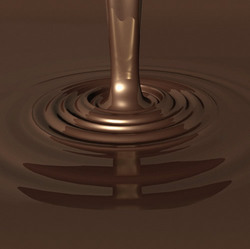 Yet, despite all these individual nuances, the overall and primary impression is of watery, green cucumber slathered in thick, heavy chocolate. The synthetic quality to the perfume is profound. As noted, cyclamen is a synthetic, but I suspect that the musk and amber undertones in Vidi must be as well because the perfume starts to create a burning feeling high up in the bridge of my nose. It’s a consistent telltale giveaway for me for truly intense synthetics. As the moments pass, the discordant notes become even more jangly, for lack of a better word. The sweetness is now tinged by maple syrup, while the cucumber has a sharply metallic edge. The vanilla also feels sharp, yet there is some sourness lurking below everything. And the chocolate cardamom doesn’t go with any of it, but especially not with the cucumber.
Yet, despite all these individual nuances, the overall and primary impression is of watery, green cucumber slathered in thick, heavy chocolate. The synthetic quality to the perfume is profound. As noted, cyclamen is a synthetic, but I suspect that the musk and amber undertones in Vidi must be as well because the perfume starts to create a burning feeling high up in the bridge of my nose. It’s a consistent telltale giveaway for me for truly intense synthetics. As the moments pass, the discordant notes become even more jangly, for lack of a better word. The sweetness is now tinged by maple syrup, while the cucumber has a sharply metallic edge. The vanilla also feels sharp, yet there is some sourness lurking below everything. And the chocolate cardamom doesn’t go with any of it, but especially not with the cucumber. If Veni was meant to evoke the Earth and Vidi meant to evoke Water, then Vici is centered on the last element, Fire. The notes, according to Histoires de Parfums and Fragrantica, are:
If Veni was meant to evoke the Earth and Vidi meant to evoke Water, then Vici is centered on the last element, Fire. The notes, according to Histoires de Parfums and Fragrantica, are: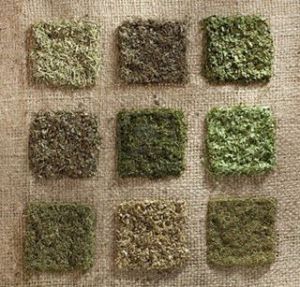 Vici didn’t evoke either fire or “victory,” in my mind. Instead, it felt like nothing more than the dark recesses of a very dusty, very old herbal shop lined with cedar and potpourri. Vici is an incredibly dry, acrid, dusty herbal scent, in my opinion, that evokes a landscape of desiccated green colours. It opens on my skin with incredibly arid, pungent, dry basil with heaping amounts of what smells like dried mint and dried tarragon, along smaller doses of dried angelica, dried violet leaves, and dried red fruits. If you sense a theme emerging, you’re not mistaken. Have I mentioned the word “dry” yet?
Vici didn’t evoke either fire or “victory,” in my mind. Instead, it felt like nothing more than the dark recesses of a very dusty, very old herbal shop lined with cedar and potpourri. Vici is an incredibly dry, acrid, dusty herbal scent, in my opinion, that evokes a landscape of desiccated green colours. It opens on my skin with incredibly arid, pungent, dry basil with heaping amounts of what smells like dried mint and dried tarragon, along smaller doses of dried angelica, dried violet leaves, and dried red fruits. If you sense a theme emerging, you’re not mistaken. Have I mentioned the word “dry” yet? 











